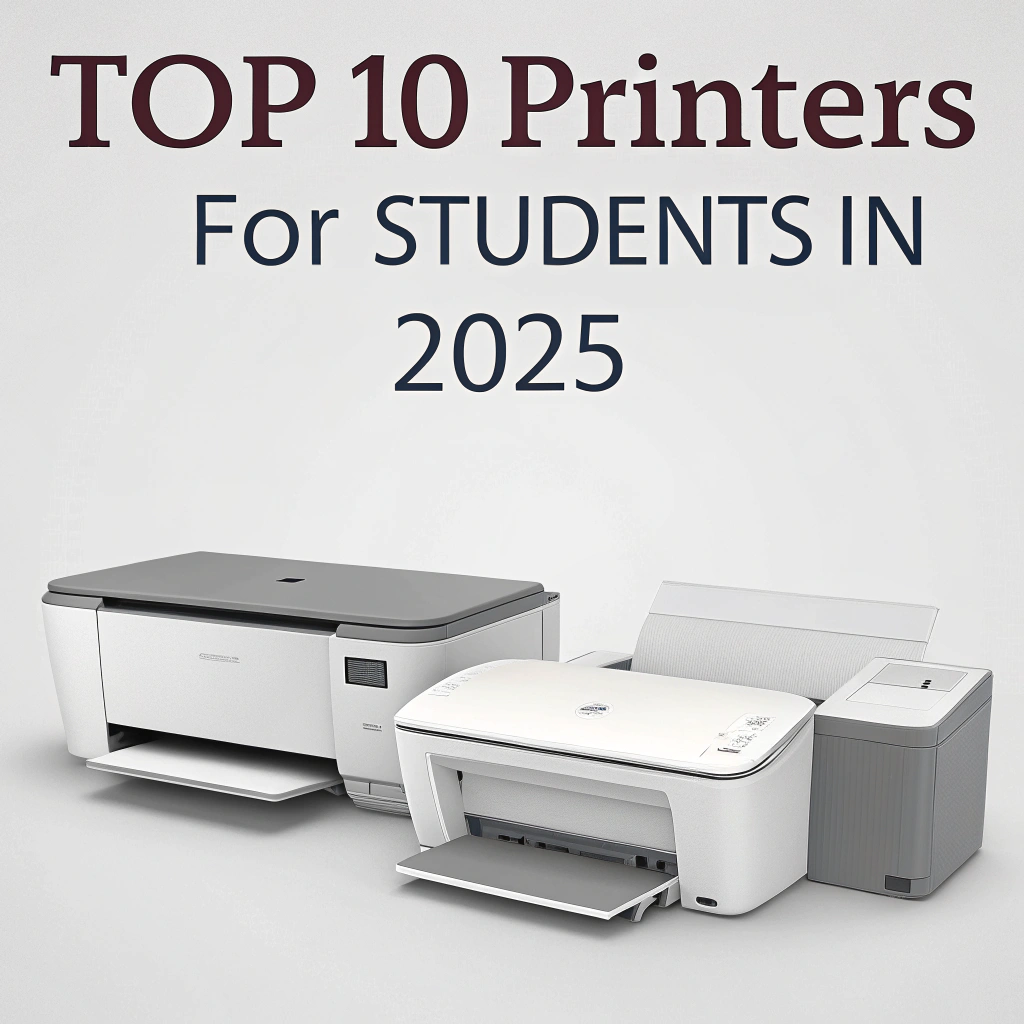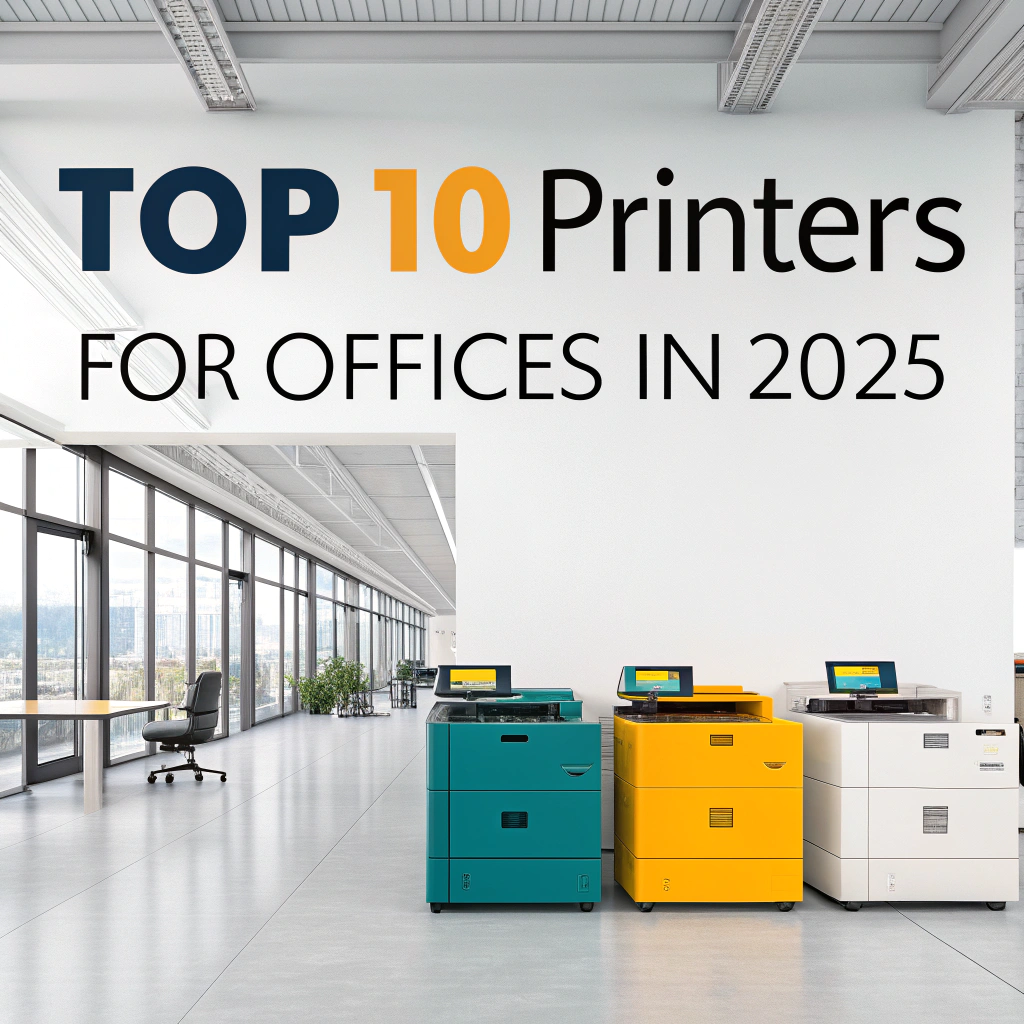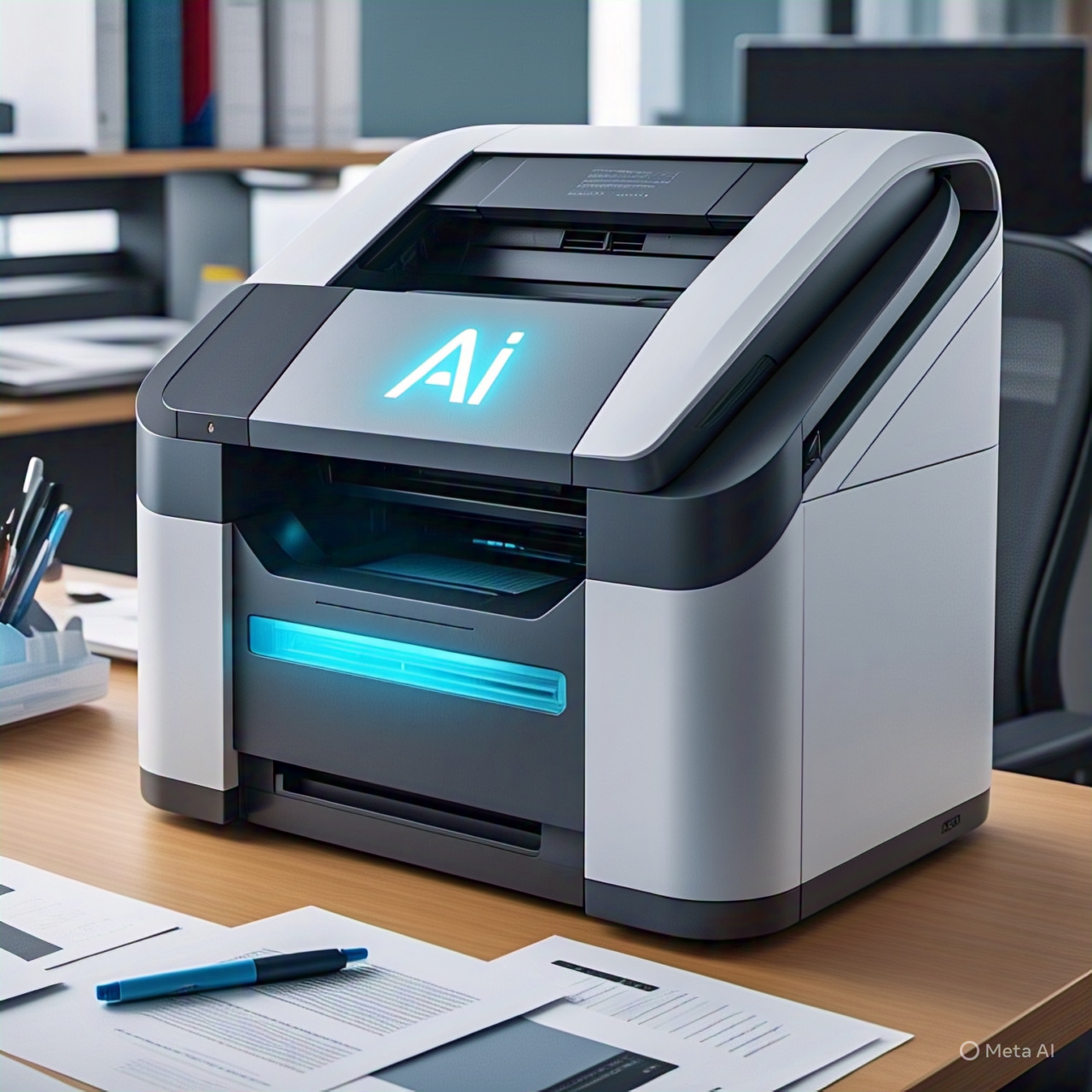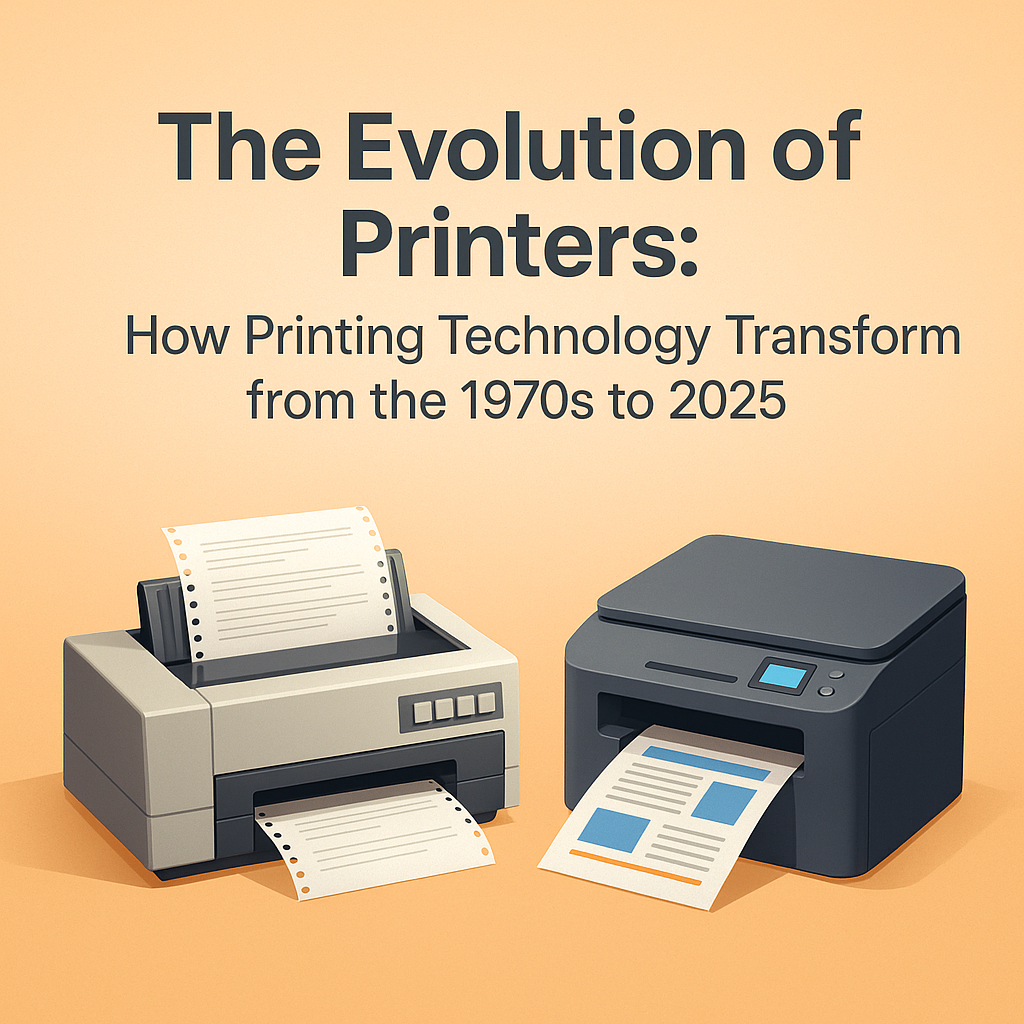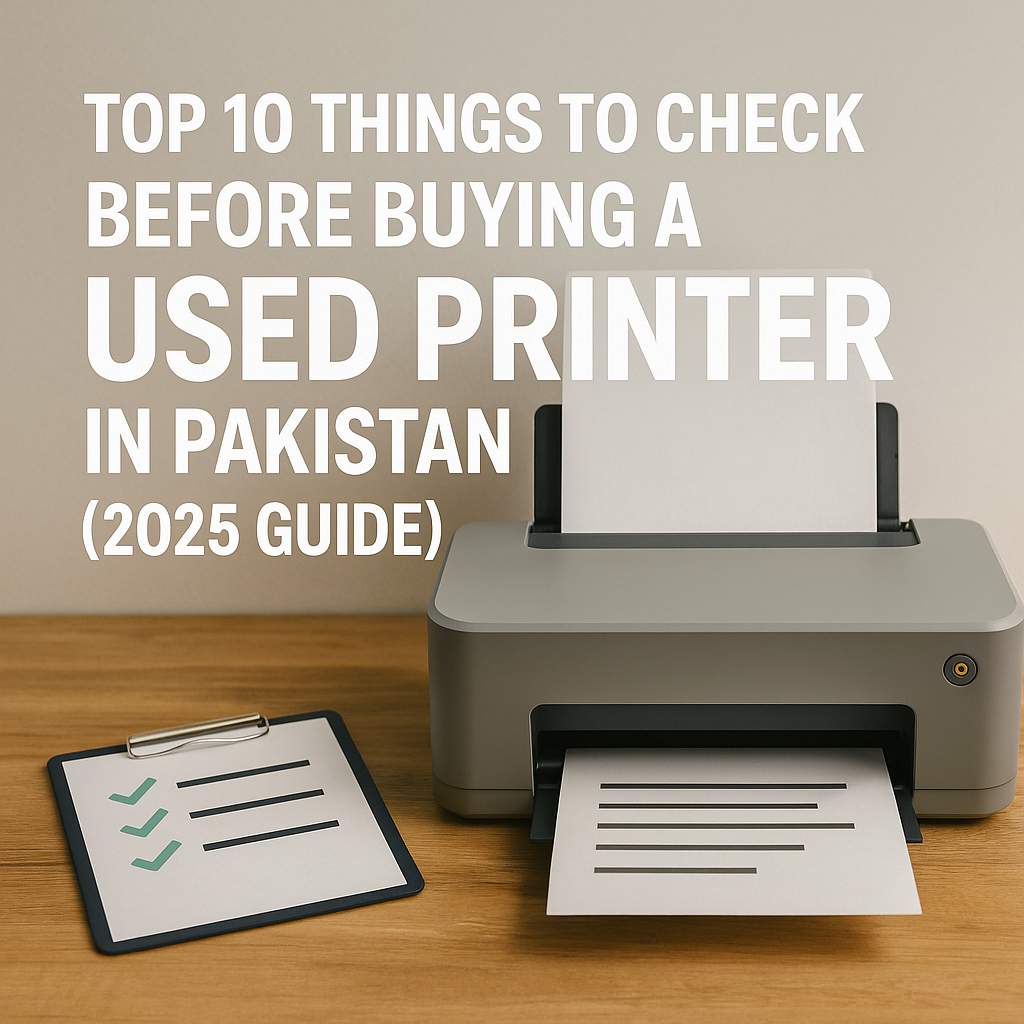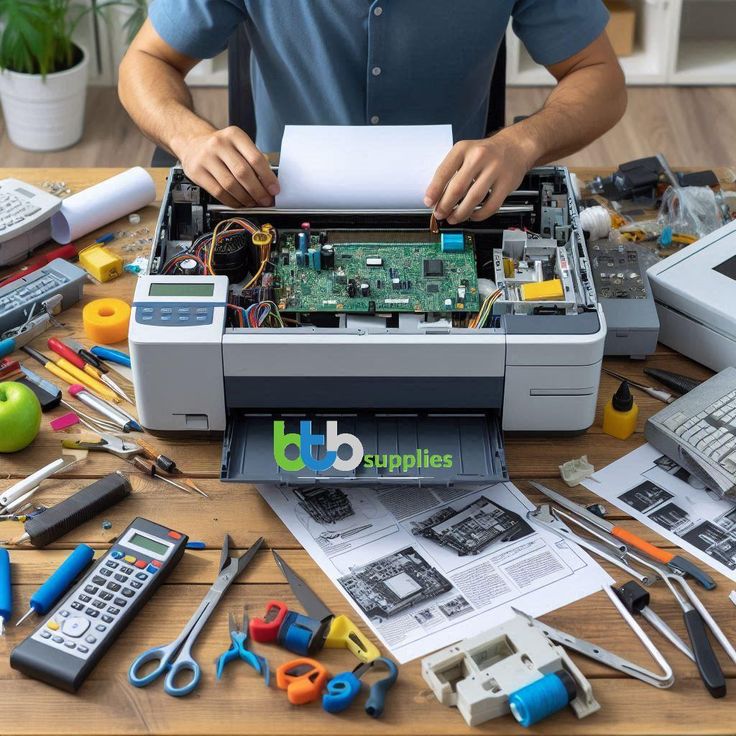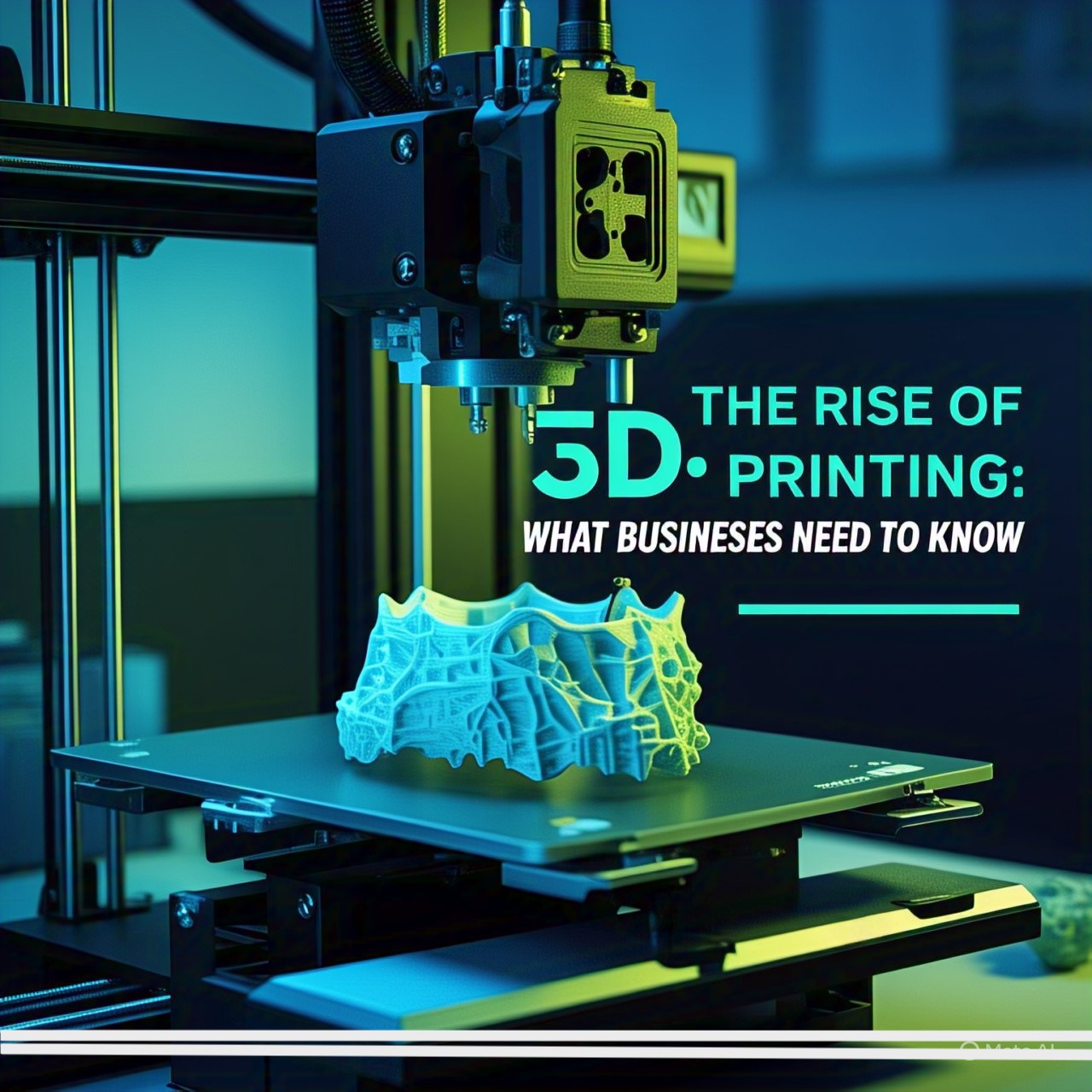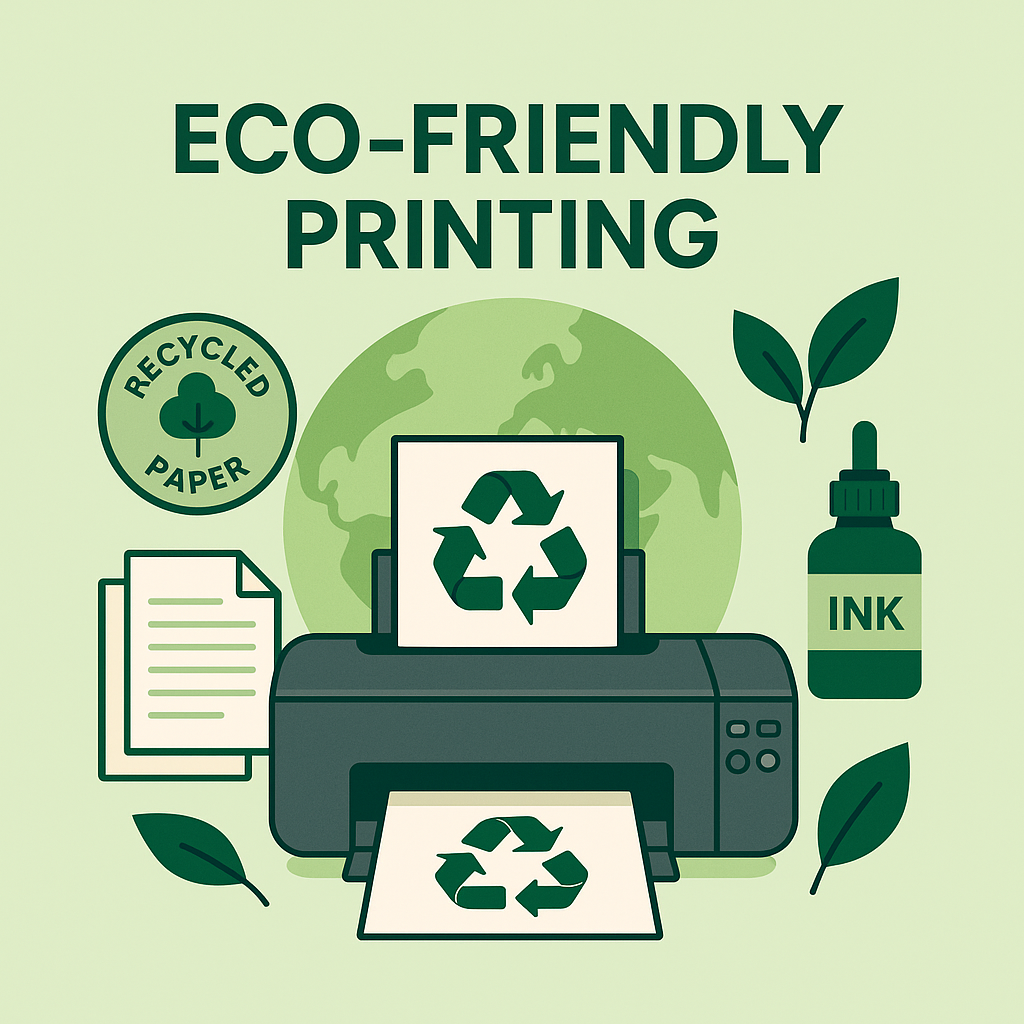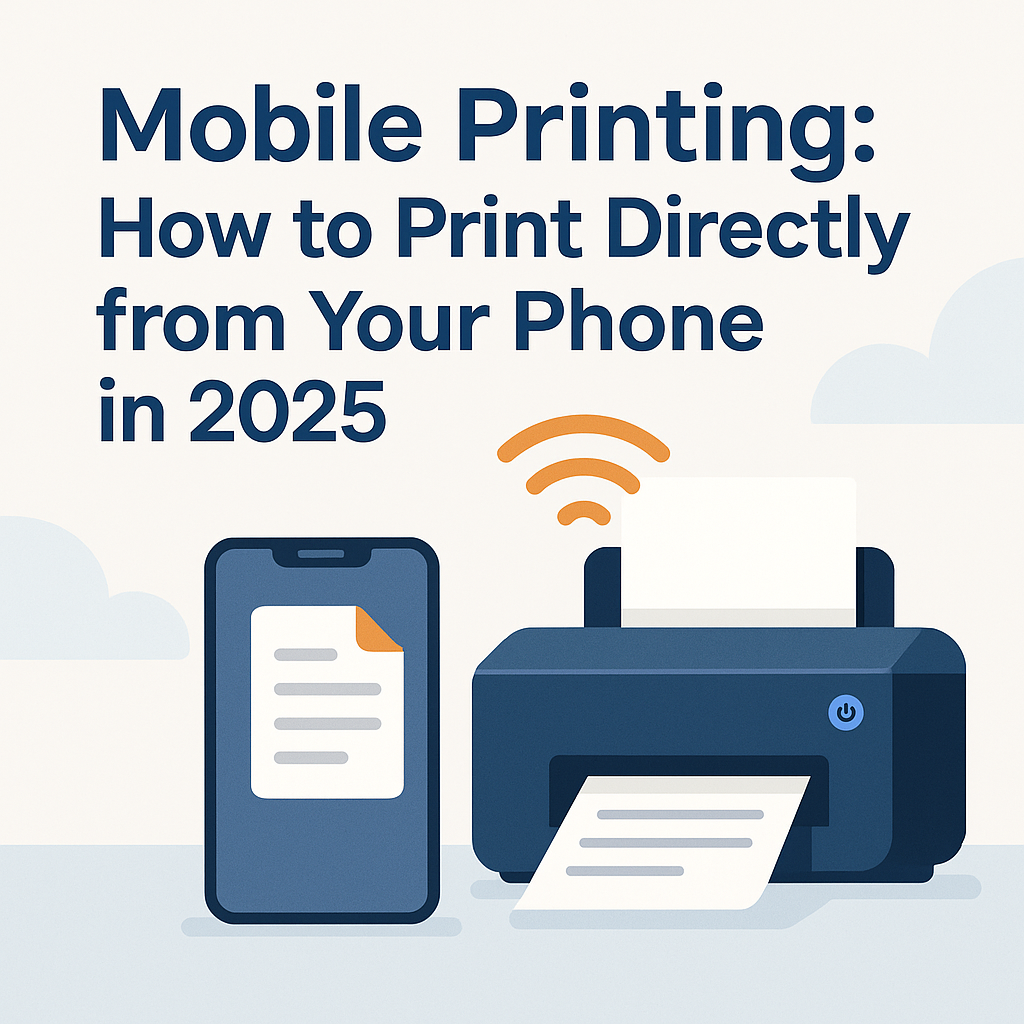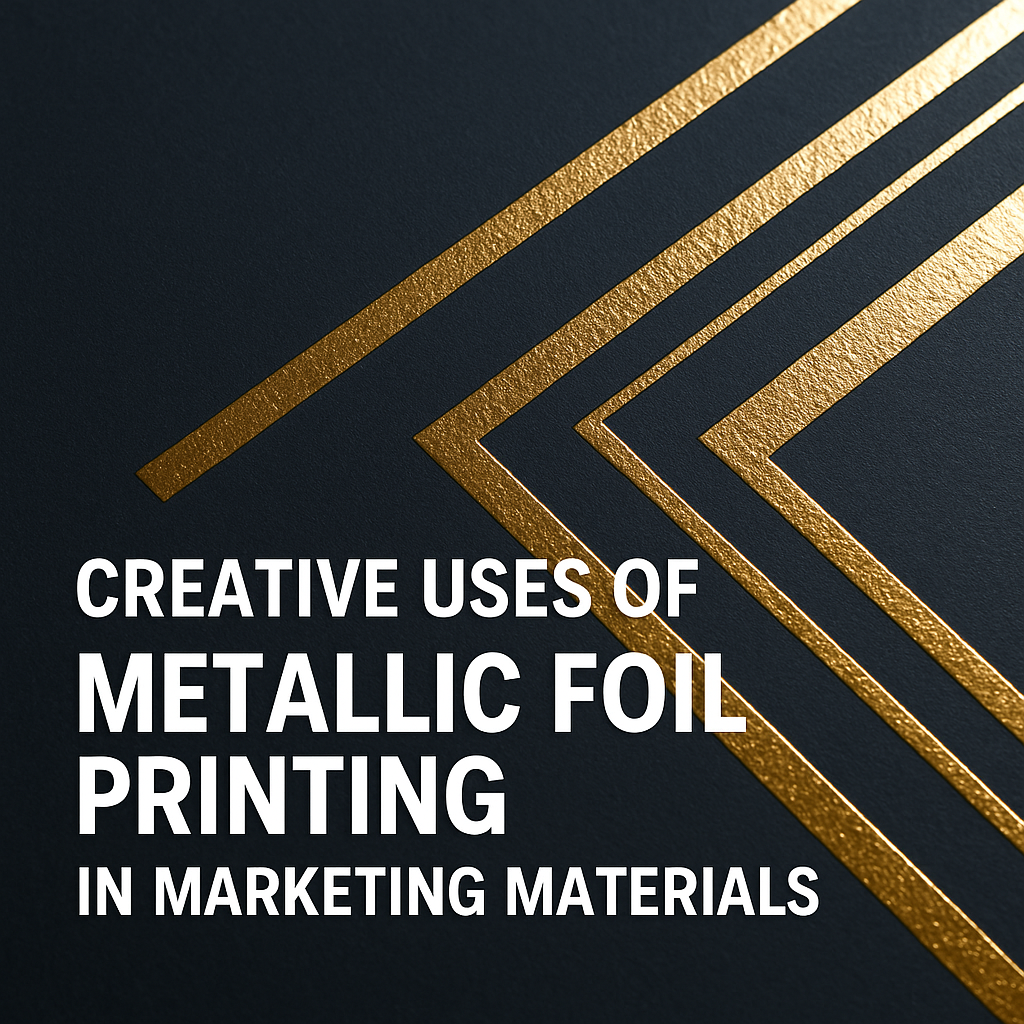How to Choose the Right Printer for Your Small Business in 2025
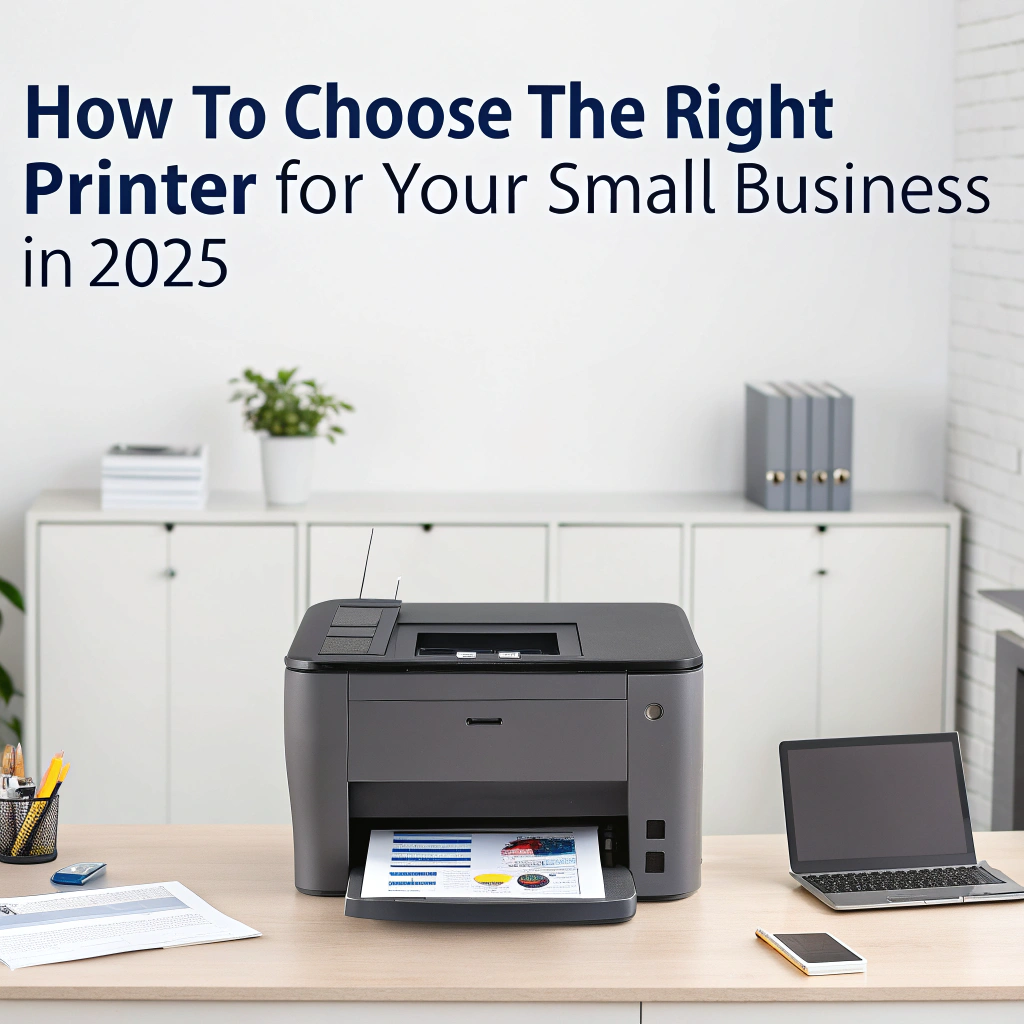
Category: Business Solutions
Date: 27 Apr, 2025
As a small business owner, choosing the right printer is crucial to ensuring smooth, efficient operations. Whether you need to print invoices, marketing materials, or important documents, the printer you select can impact your productivity, costs, and overall workflow. With the wide variety of printers available in 2025, how do you know which one is the best fit for your business?
In this guide, we’ll walk you through key factors to consider when choosing the right printer for your small business in 2025. From printing volume to connectivity, this article will help you make an informed decision.
1. Understand Your Printing Needs
The first step in selecting a printer for your business is to assess your printing needs. How often will you print? What types of documents do you need to print? Do you need additional features like scanning and faxing? Understanding your printing requirements will narrow down the choices.
- Low Volume (Occasional Printing): If you don’t print frequently, a compact inkjet printer may be a good option. These are affordable, space-saving, and perfect for occasional use.
- Medium Volume (Occasional to Regular Printing): For businesses that print regularly (e.g., marketing materials or invoices), a laser printer offers faster printing speeds and better cost-per-page efficiency.
- High Volume (Frequent Printing): If your business relies heavily on printing, consider a high-volume laser printer or a multifunction device that can handle large volumes of work without sacrificing quality.
2. Choose Between Inkjet and Laser Printers
The next important decision is whether you need an inkjet or laser printer. Each type has its pros and cons, depending on your needs.
- Inkjet Printers: These are ideal for businesses that need color printing. Inkjet printers excel at producing high-quality images and graphics, making them a great choice for businesses that print brochures, presentations, or photos. However, ink cartridges can be expensive, and inkjets generally have a slower print speed compared to laser printers.
- Laser Printers: Laser printers are best for businesses that need fast, high-volume black-and-white printing. They offer lower operating costs per page, especially for monochrome documents, and they print quickly. Laser printers are perfect for offices that primarily print text-heavy documents like contracts, memos, and reports.
Tip: If you require color prints on a regular basis, consider a color laser printer for faster and more affordable color printing compared to inkjets.
3. Consider Print Speed and Volume
Print speed and volume are critical factors, especially if your business deals with high print demand. Printer speed is typically measured in pages per minute (ppm).
- Low-Speed Printers: Printers that offer speeds of 15-20 ppm are ideal for businesses that only need occasional printing.
- Medium-Speed Printers: A printer with speeds around 30-40 ppm is perfect for small businesses that print documents regularly.
- High-Speed Printers: High-end printers with speeds of 50 ppm or more are suitable for larger businesses or industries with heavy printing needs, like law firms, real estate agencies, or marketing companies.
Make sure to match the print speed to the volume of documents you expect to handle daily.
4. Evaluate Connectivity Options
In today’s digital age, connectivity options are essential for smooth printing. Many modern printers come with wireless capabilities, allowing you to print from smartphones, tablets, or laptops. Here are some common connectivity features:
- Wi-Fi: Most printers now come with Wi-Fi connectivity, enabling multiple devices to access the printer over the same network. This is ideal for businesses with remote or mobile workers.
- Bluetooth: Some printers support Bluetooth, making it easy to print from devices like smartphones and tablets, even when away from the network.
- USB and Ethernet: For businesses that prefer a direct connection, USB or Ethernet connections provide reliable, fast printing without relying on wireless networks.
Make sure your printer has the right connectivity for your business needs, especially if you have employees working remotely or using mobile devices.
5. Multi-Function or Single-Function Printer?
Many businesses opt for multifunction printers (MFPs) that can handle not only printing but also scanning, copying, and sometimes faxing. This versatility can save space and money, especially if you have limited office space.
- Multifunction Printers: Great for businesses that need to scan, copy, and fax regularly in addition to printing. MFPs are available in both inkjet and laser formats, with options for color printing.
- Single-Function Printers: If your business only needs to print documents and doesn’t require scanning or copying, a single-function printer may be more cost-effective.
MFPs tend to be more expensive upfront, but they can save you money by eliminating the need for additional standalone devices.
6. Printer Cost and Maintenance
When selecting a printer, consider both the initial cost and ongoing maintenance costs. Laser printers generally have a higher initial cost but are more economical over time. Inkjet printers have a lower upfront cost but may require more frequent ink replacement, which can add to long-term expenses.
- Cost Per Page (CPP): Look at the cost per page, which includes the cost of ink or toner, to understand your ongoing printing costs.
- Toner and Ink Cartridge Yield: The yield refers to the number of pages a toner or ink cartridge can print before needing replacement. Higher-yield cartridges tend to be more cost-effective.
It’s important to factor in these costs to ensure that the printer is affordable in the long run.
7. Security Features
For businesses that handle sensitive documents, security is a top priority. Many modern printers offer enhanced security features to protect your data, such as:
- Encryption: Protects data during transmission to prevent unauthorized access.
- Secure Print: Ensures that sensitive documents are only printed when the user is present at the machine.
- IC Card Readers: Allows businesses to implement user authentication, ensuring that only authorized personnel can print documents.
Choosing a printer with strong security features is essential if your business deals with confidential information.
Conclusion
Choosing the right printer for your small business in 2025 requires careful consideration of your specific needs, printing volume, connectivity options, and security requirements. Whether you need a budget-friendly option for occasional printing or a high-speed, multifunction printer for heavy-duty workloads, there’s a printer that can meet your needs.
By evaluating the factors mentioned in this guide, you can find a printer that will improve efficiency, lower operating costs, and support your business’s growth.
FAQs (Frequently Asked Questions)
- What’s the difference between inkjet and laser printers?
- Inkjet printers are ideal for high-quality color printing, while laser printers are best for fast, high-volume monochrome printing.
- What is the best printer for small businesses?
- The best printer for your business depends on your specific needs. A laser printer is ideal for fast, high-volume printing, while a multifunction printer is great for businesses that require scanning and copying.
- How much should I spend on a printer for my business?
- The price depends on the features and capabilities you need. Generally, you can find good-quality small business printers between $100 and $500. For higher-volume needs, expect to pay more



